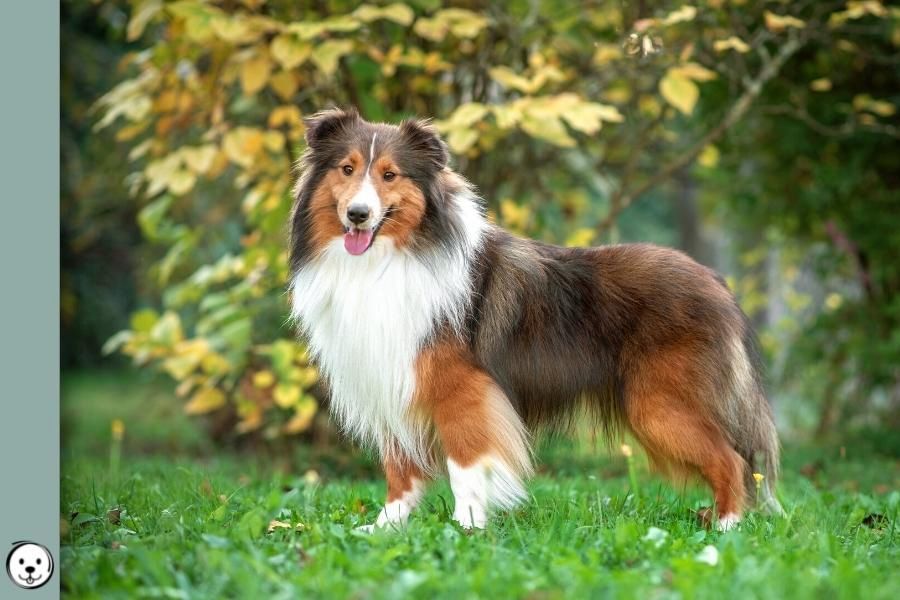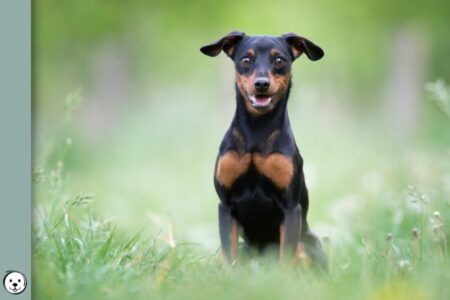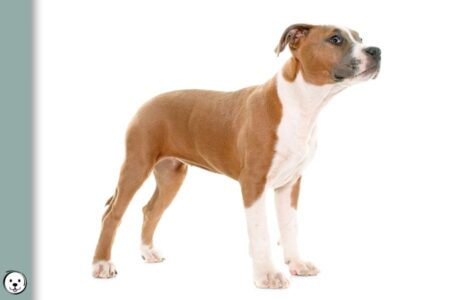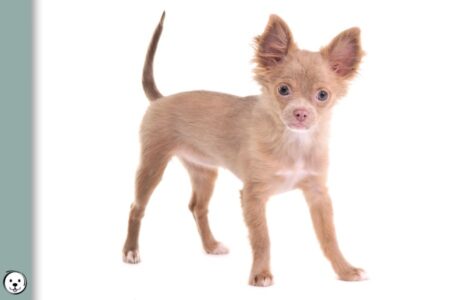A dog is shaded yellow or shaded sable when he has a white, yellow, or red base coat with dark-tipped hair in some areas. Sable shading is concentrated mostly on the dog’s back and often causes a widow’s peak on the forehead.
Content
What is Shaded Yellow?
Shaded yellow or shaded sable describes a coat with a white, yellow, or red base color and darker hair tipping. The expression of dark-tipped hairs is called sabling or shading.

Hair tipping is in essence a reduced version of agouti hair banding. So expect not all sable hairs to look the same. Shaded sables can also have slightly banded hairs, some even with a dark root.
Areas with dark pigment are commonly found on their shoulders, collar, back, neck, tail, and forehead.
Sable puppies are born with dark-ish coats but will start to clear after some weeks.
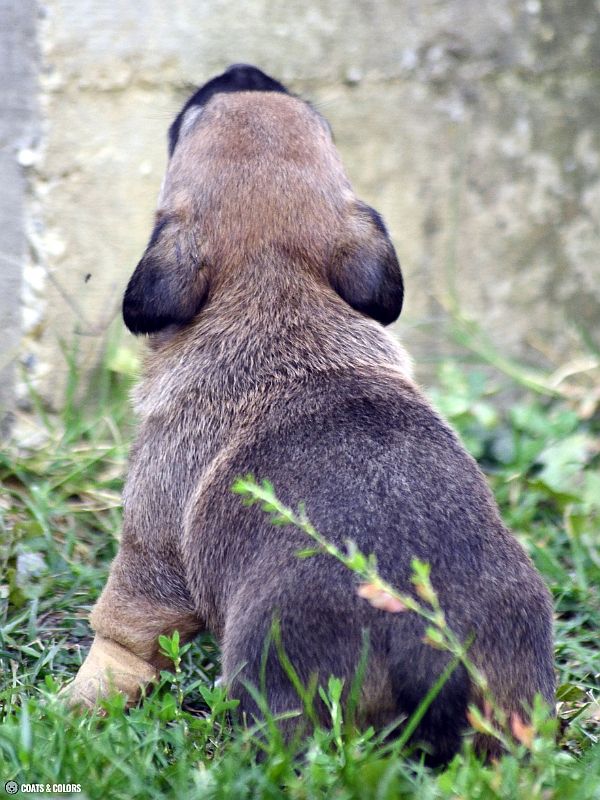
Many dogs with sable shading display a widow’s peak on their forehead.
With only some exceptions, normal sabling typically causes no eumelanin shading below the eyes. A dark nose bar or eye shadow hint at agouti which can look a little similar at first glance.
Hints of face and leg shading only happen in very heavily shaded sables.



Until recently, there was no accurate way of predicting if a sable pattern would keep its dark puppy shading or not, both phenotypes were considered natural variations of sable (Ay).
However, we know more genetics of shaded yellow or shaded sable than ever before. With new findings, the name shaded yellow was chosen to distinguish this pattern from a dominant yellow phenotype.
The difference between clear and shaded sable is the amount of eumelanin-tipped hairs.
A dominant yellow dog has an almost solid coat color. A shaded yellow dog has considerable amounts of dark pigment seen in the hair tips on his neck, ears, or back.
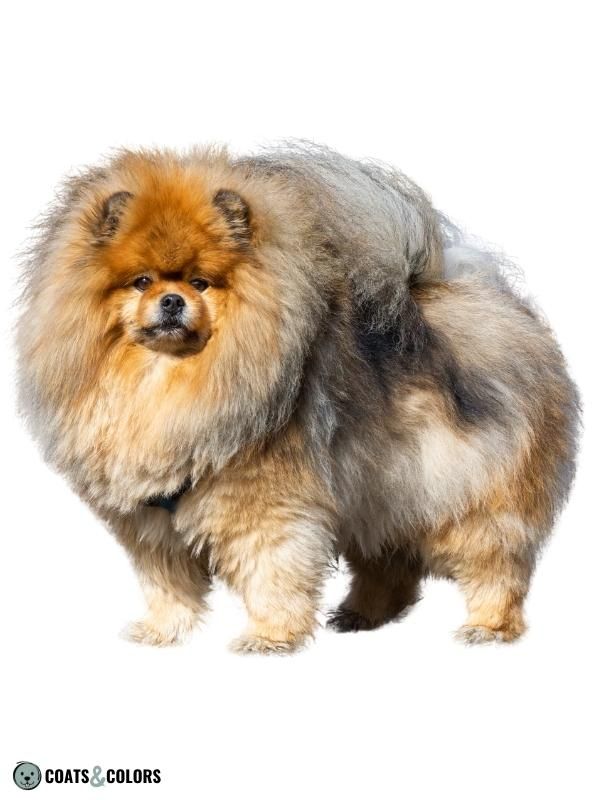
The ASIPSY allele (Ays)
The A-Locus promotes phaeomelanin production at the expense of eumelanin in bicolored pigment patterns.
The ASIP gene patterns can only be seen in dogs that are not dominant black (KB/-) at the K-Locus and not recessive red (e/e) at the E-Locus.
For a long time, there were only four different alleles at the A-Locus: Ay (Sable) > aw (Agouti) > at (tan point) > a (recessive black). And for many breeds, this system still works pretty well and is about as much as breeders need to know.
But in some dogs, this old testing system lacked some necessary information to predict all coat patterns. And sable shading was one of those things that could not be predicted previously.
Thanks to new research we now understand six different phenotypes caused by different A-Locus variants:
| ASIPDY | Ay | Dominant Yellow, Clear Sable |
| ASIPSY | Ays | Shaded Yellow, Shaded Sable |
| ASIPAG | aw | Agouti, Wolf Grey |
| ASIPBS | asa | Black Saddle |
| ASIPBB | at | Black Back, Tan Point |
| ASIPa | a | Recessive Black |
Shaded sable (ASIPSY or Ays) is the second-most dominant trait at the A-Locus.
It is caused by a particular combination of two newly described regions inside the ASIP gene:
The wild-type version of the ventral promoter (VP) produces clear phaeomelanin-pigmented areas without any banding on the dog’s muzzle, eyebrows, chest, belly, lower legs, and under the tail (VP2). The more active version would cause more phaeomelanin as seen in dominant yellow dogs (VP1).
The hair cycle promoter (HCP) normally produces a banded coat with alternating dark and light stripes of pigment (HCP2) or a solid black coat (HCP3, HCP4, or HCP5).
But a more active variant (HCP1) shifts the banding pattern towards phaeomelanin production. This causes a coat with dark-tipped hairs instead of multi-banded hairs.
This combination or haplotype (VP2-HCP1) represents the new dominant yellow allele Ays. Other haplotypes represent other alleles (see the A-Locus for more info).
| Phenotype | Allele | VP | HCP |
| Clear Sable | Ay | VP1 | HCP1 |
| Shaded Sable | Ays | VP2 | HCP1 |
| Agouti | aw | VP2 | HCP2 |
| Saddle Tan | asa | VP1 | HCP4 |
| Tan Point | at | VP2 | HCP3,4,5 |
| Recessive Black | a | (VP2) | (HCP3) |
Ays is the second-most dominant trait in this allelic series meaning dogs with an Ays/- genotype can be carriers for many other A-Locus variants, e.g. Ays/at.
However, according to the new allelic hierarchy, a shaded yellow dog can not produce a dominant yellow dog. The old testing can not distinguish between these patterns, both will be reported as Ay/Ay.
Shaded Sable Patterns
Puppies for some reason express more eumelanin as they will usually keep in their adult coat. Dogs with a shaded yellow coat are often born with an almost black coat.
As youngsters, they can go through a very paler phase until some amount of shading returns.

Adult shaded sable dogs often have a widow’s peak on their forehead that ends above or between the eyes. In contrast to other patterns, black shading rarely extends along the ridge of the nose.
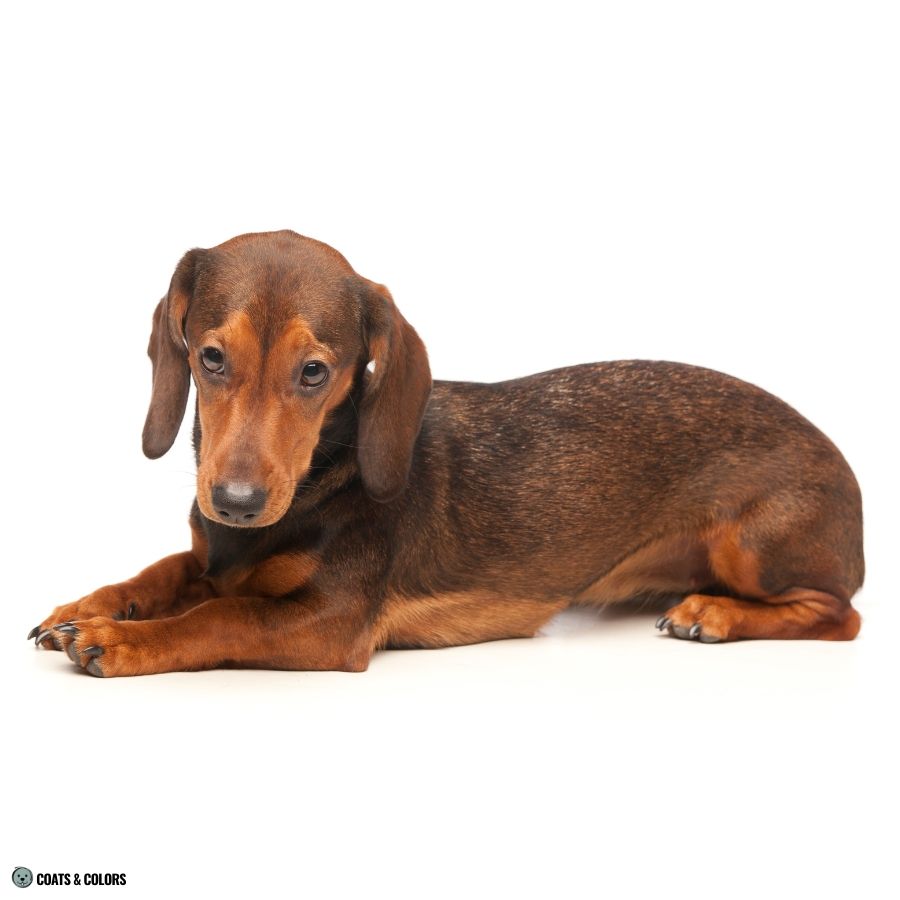
Since shaded yellow coat contains a noticeable amount of eumelanin any phenotype affecting eumelanin might be visible, e.g. sable merle or greying.
Amount of Sabling
Darker hair tips typically appear on the dog’s ears, neck, back, and tail. But a shaded yellow coat can have a large or small amount of sabling. Dogs with less amount of shading are sometimes called tipped sable.
Melanistic masks are known to sometimes extend the perceived amount of shading. They usually don’t add to the sabling but large masks can add shading of their own to the chest and legs.
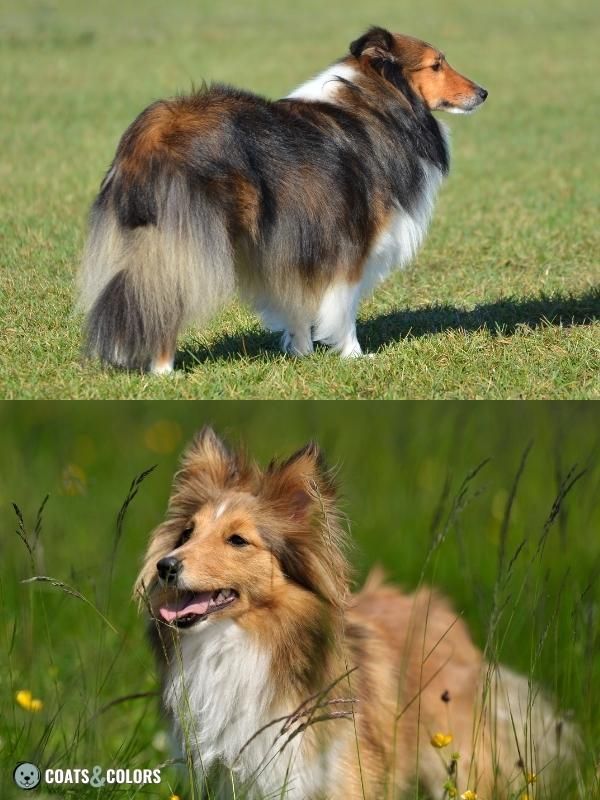
Some heterozygous combinations at the A-Locus are known to behave as an incomplete dominant.
A shaded yellow dog that carries tan point (Ays/at) or recessive black (Ays/a) might have a darker coat than a homozygous dog (Ays/Ays).
And of course, coat length and coat texture can also have an influence on how dark a dog looks. Hair tipping is more pronounced in longhaired dogs since their hair tips can grow longer.
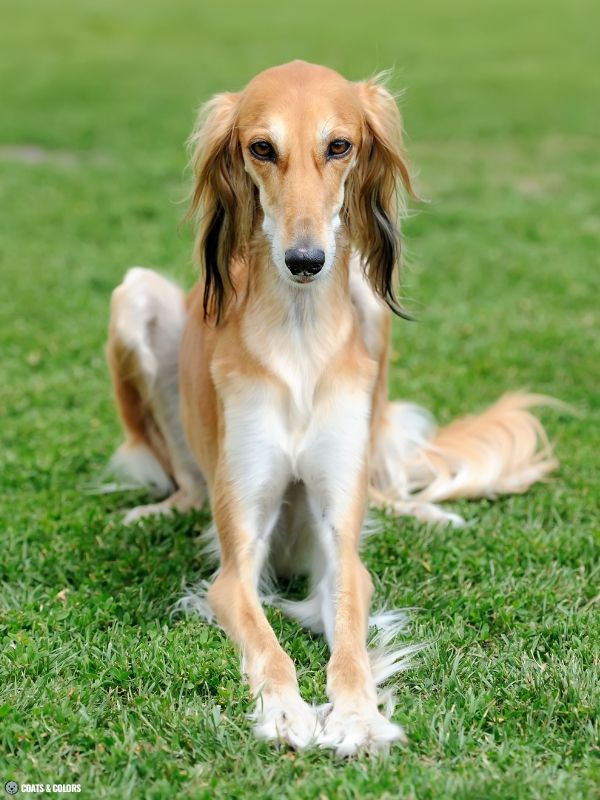
Base Color Intensity
The base color provided by phaeomelanin can range from white to yellow up to red. Different factors control phaeomelanin intensity.
In shaded yellow dogs, different base colors can result in certain phenotypes being described as silver, cream, red, etc.
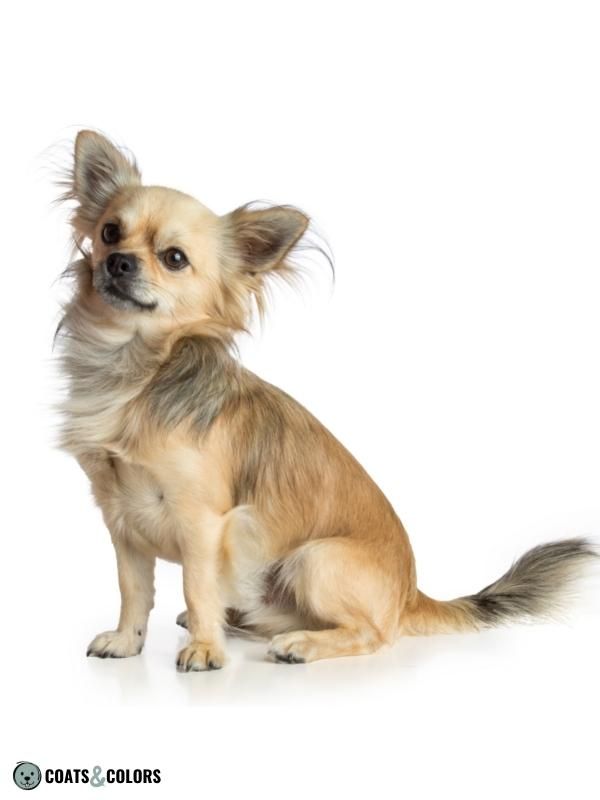
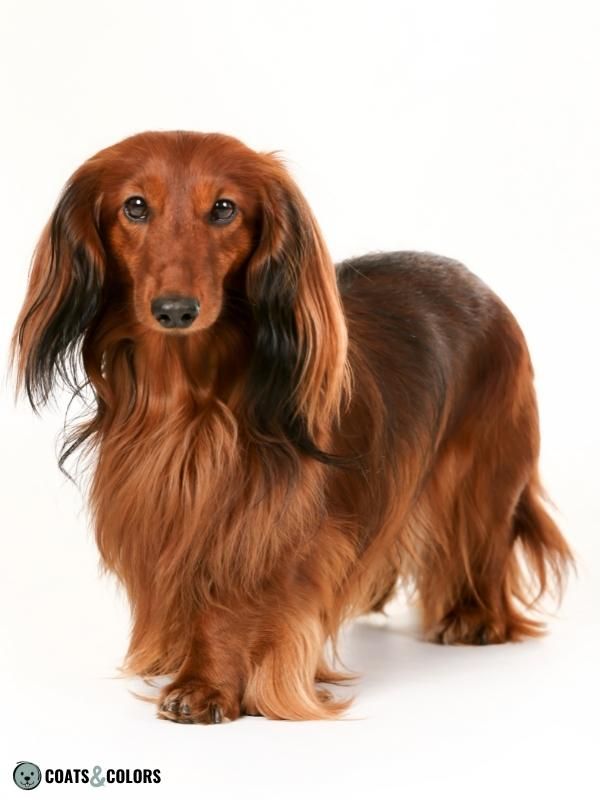
Black Sable
The nose, eye rims, lips or nails as well as the dark tips in all shaded areas get their color from eumelanin.
The wild-type color of eumelanin is black and the majority of dog breeds express black-based shaded sable.
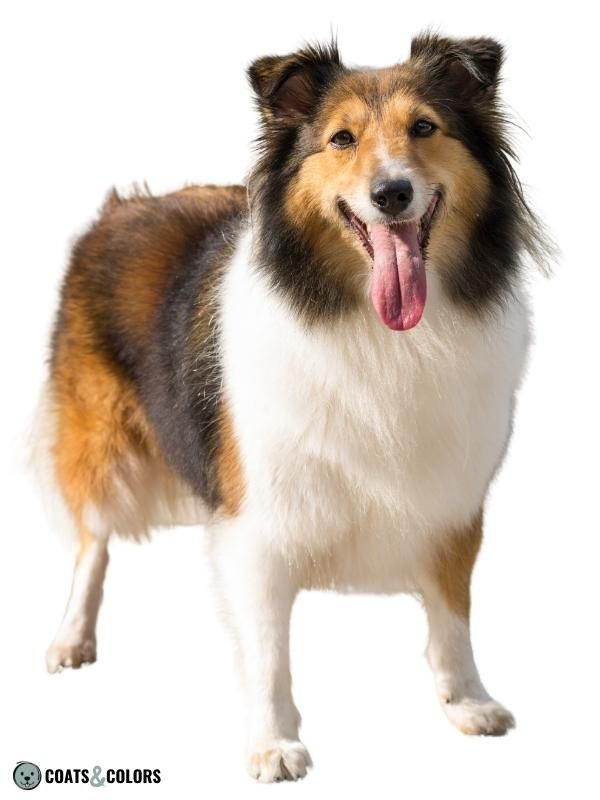
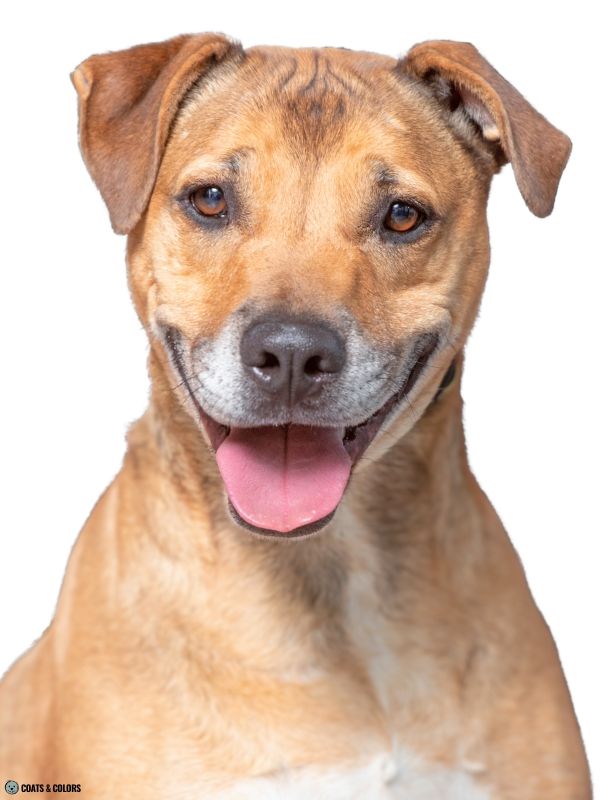
Liver Sable
A homozygous recessive combination at the B-Locus (b/b) can turn all black pigment to brown. This affects all the eumelanin on a dog, so the nose and skin pigment will also be brown. Typically brown dogs also have greenish puppy eyes and amber eyes as adults.
Brown-based shaded sable may not be as obvious as black-based sable since there may be little contrast between brown hair tips and let’s say a red base color.
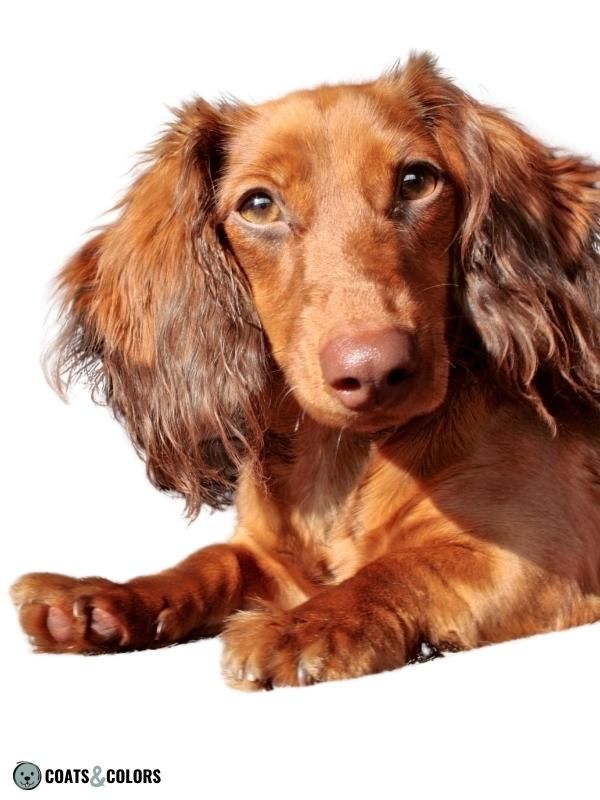

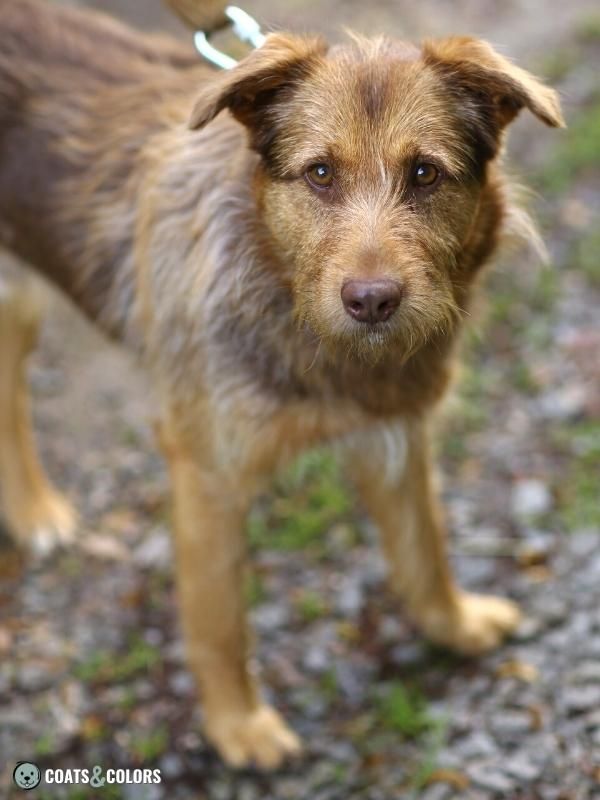
Blue Sable
If a dog can produce black pigment (B/-) but is homozygous recessive for color dilution at the D-Locus (d/d) all black pigment will turn to a blue, grey, or slate color.
This turns all dark hair tips, skin pigment, and the nose leather blue and typically causes a yellow-greenish eye color.
A blue-based shaded sable can have a very distinct and shiny look caused by the blue overcast on its back.
Lilac Sable
Just as black pigment can be turned blue by color dilution, brown can be diluted to isabella/lilac. But since lilac hair tips barely give any contrast it can be difficult to spot this pattern.
Shaded Brindle Sable
Brindle (kbr/-) adds dark stripes on any phaeomelanin-pigmented coat. Depending on a dog’s B-Locus and D-Locus all brindle stripes will be black, blue, brown, or lilac.
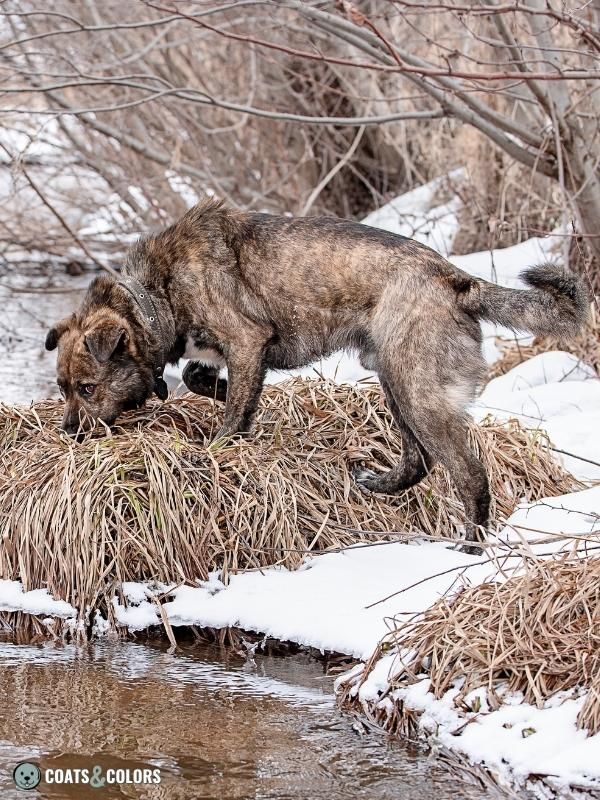
Masked Shaded Sable
A melanistic mask (Em/-) adds eumelanin to a dog’s muzzle or face. Sometimes masks grow even bigger and can add some shading to the chest and legs.
Some examples of dog breeds that can have masks and shaded sable are Belgian Sheepdog, Leonberger, Papillon, or Borzoi.

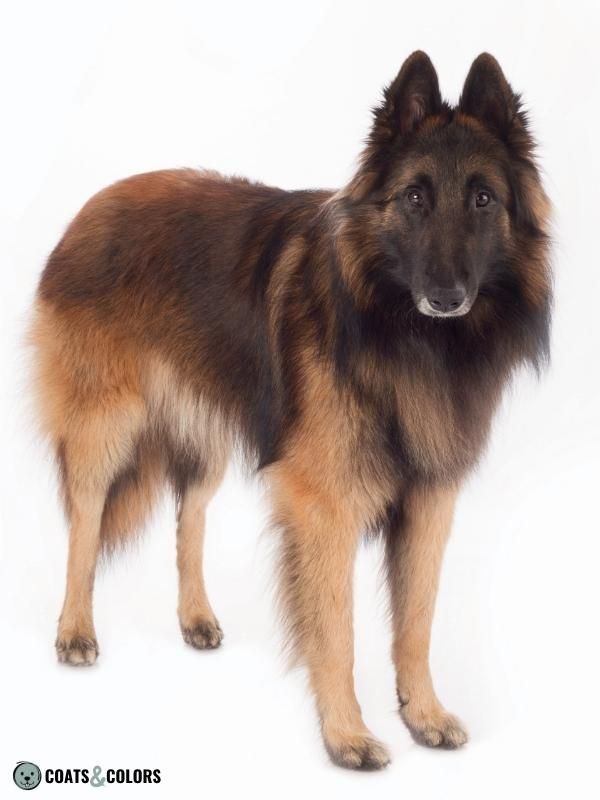
Shaded Sable and White
Traits like piebald, whitehead, or Irish spotting can cause white patches without any pigment. Think of these patches as an overlay that can hide a dog’s coat color in some places.
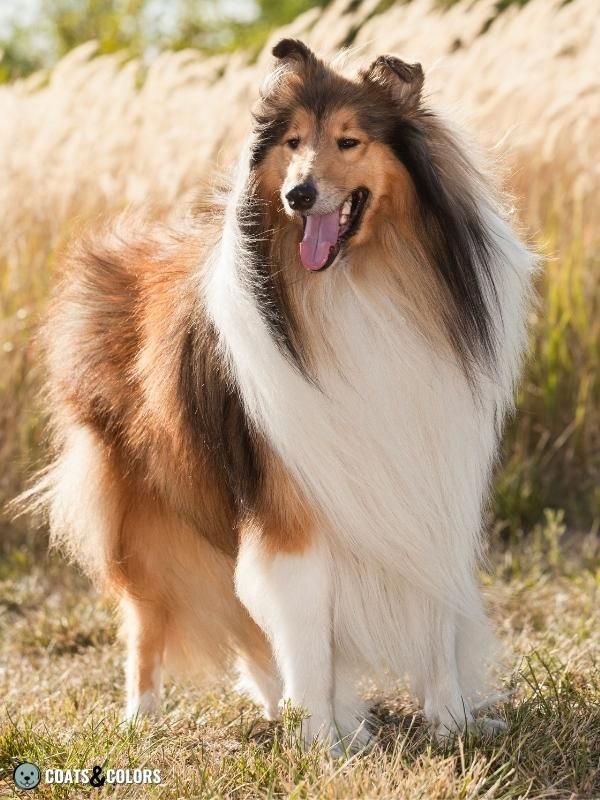
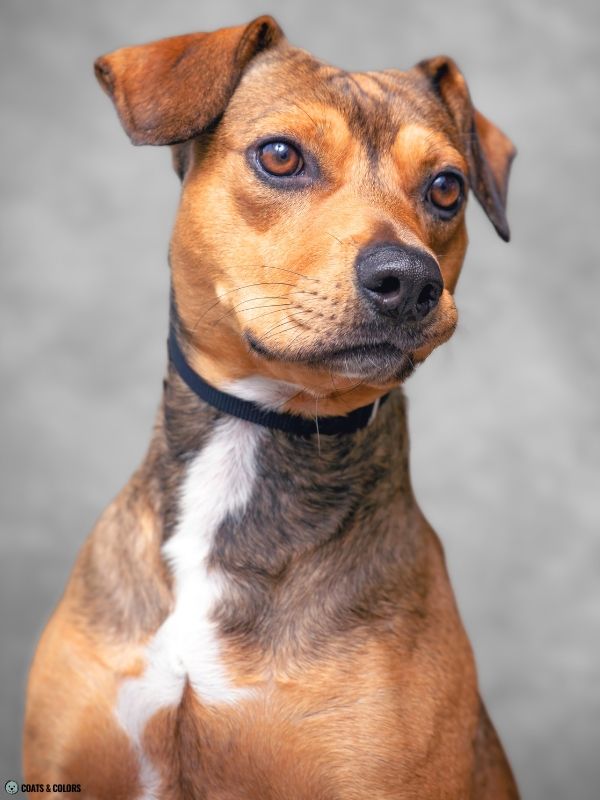
Shaded Sable and Ticking
In some dogs, the areas that were white at birth can get some of their color back. Over time little fully pigmented dots or a portion of single hairs will grow inside the white markings.
These phenomena are called ticking or roan. They produce exactly the color one would have expected in their place if the dog hadn’t been white.
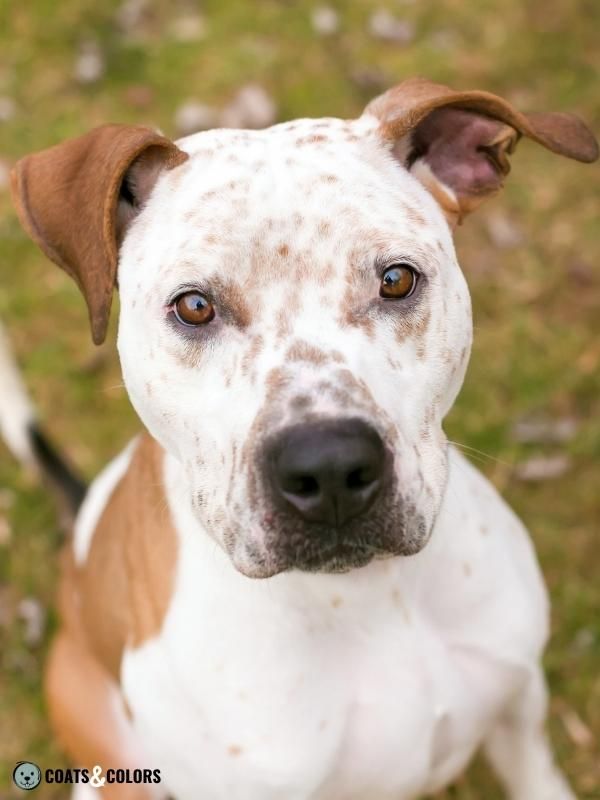
Sable Merle
Merle deletes some pigmented in all eumelanin-colored areas. Classic merle has barely any effect on any solid yellow coat. To be visible, a dog must have at least some eumelanin.
A shaded yellow dog can have a large amount of black-tipped hairs on his back. This can make the canvas for merle to work on just big enough to become visible.
Oftentimes, the merle pattern is only visible in the more heavily shaded puppy coat but fades when the shading starts to clear.
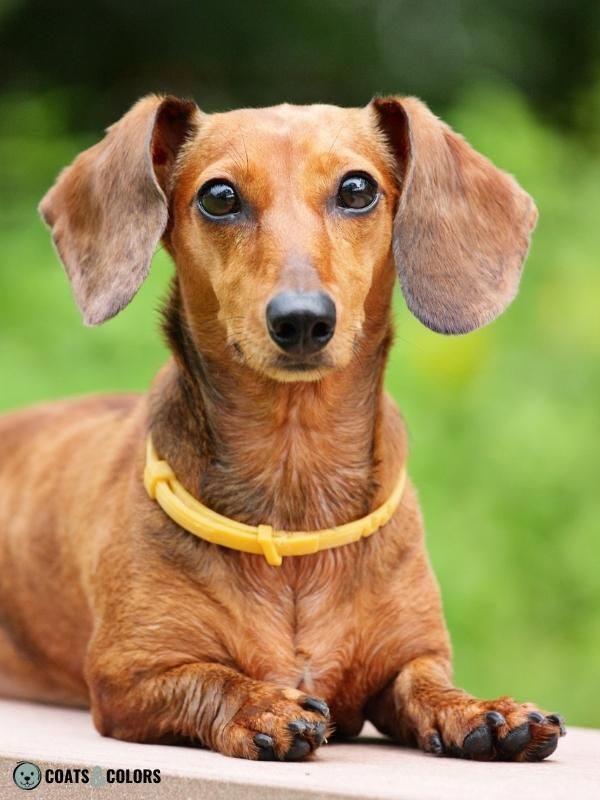
Producing sable merle is discouraged in most breeds that have both traits since there is always the risk of accidentally producing a dog with hidden merle.
This in turn creates a risk when breeding such a “non-merle looking dog” to another merle and creating double merle. We highly recommend M-Locus testing whenever breeding with merle to reduce an easily avoidable risk.
Sable and Greying
Progressive greying causes the fading of eumelanin pigment and is usually only visible in dogs with a furnished coat. It turns black and blue eumelanin to grey or silver and brown or lilac pigment to beige or whitish beige.
Since this only works on eumelanin it only affects the darker shaded areas.
Examples of dog breeds with shaded yellow and greying are Tibet Terrier, Havanese, Polish Lowland Sheepdog, Shih Tzu, Lhasa Apso, and some color-bred Poodles.

Sable and Countershading
Countershading causes lighter markings on the dog’s underside, chest, throat, muzzle, eyebrows, and under the tail. It can give a somewhat smooth color transition from ventral to dorsal areas.
In some breeds, the lighter markings turn almost white and have very defined edges. The correct placement of very countershading is called urajiro in some Asian spitz breeds.
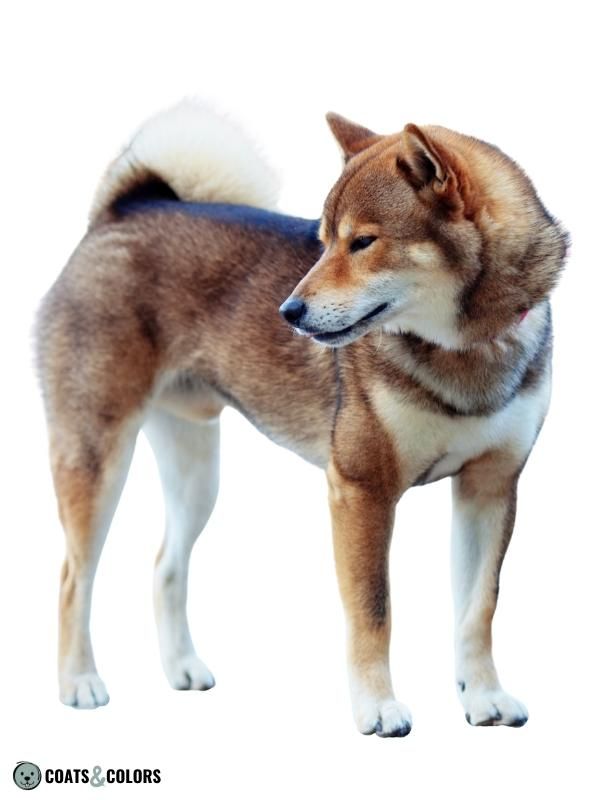
Sable and Domino
Domino traits like ancient domino and grizzle reduce the amount and spread of eumelanin. They can also lighten the intensity of phaeomelanin in any pattern.
In dogs that are genetically shaded sable, it can delete most or all of the dark shading. This causes a more uniform cream or pale yellow look on dogs that should have had shading.
In sighthound breeds like Saluki, this is called newsprint cream.
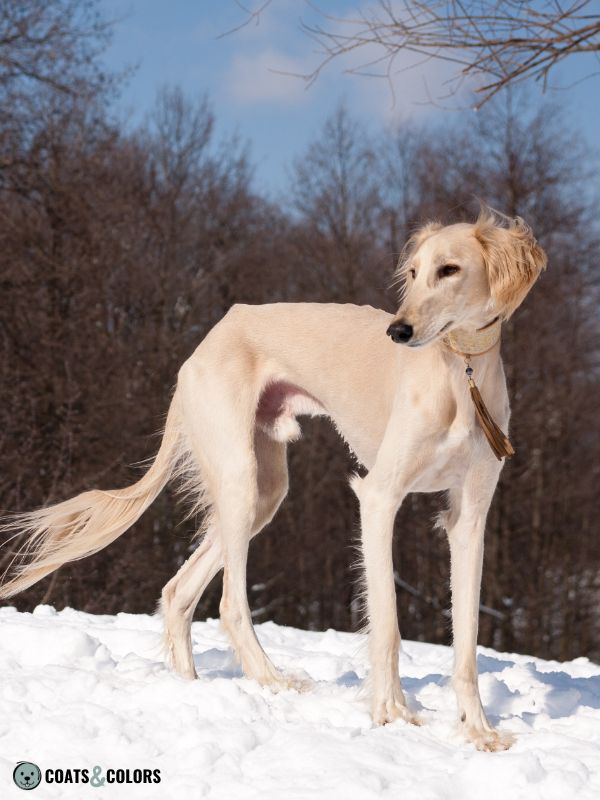
Another interesting thing about domino is that agouti domino or even strong tan point domino sometimes resemble a sable-like pattern:
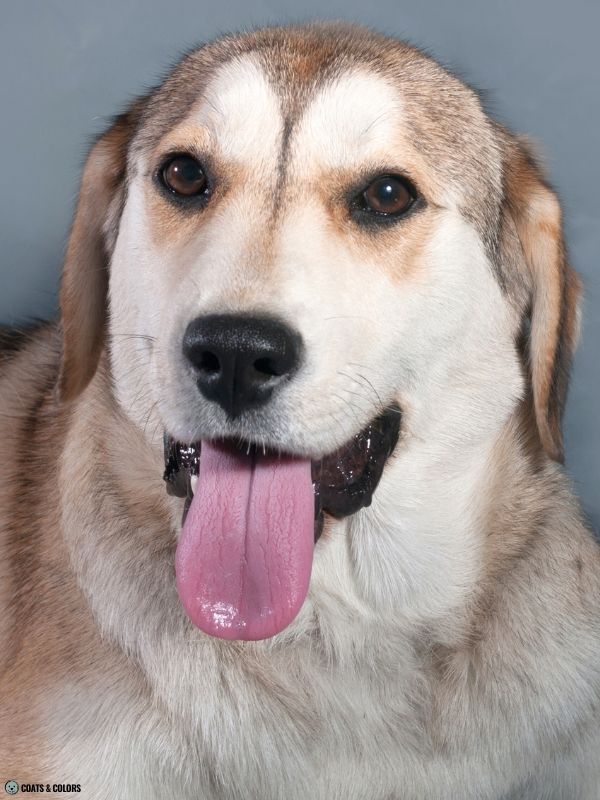
Dog Breeds with Shaded Yellow
Shaded yellow is a very common pattern and is found in many breeds[1]:
- Alpine Dachsbracke
- Belgian Malinois
- Belgian Tervuren
- Border Collie
- Border Terrier
- Borzoi
- Central Asian Shepherd Dog
- Chihuahua
- Collie
- Dachshund
- Havanese
- Leonberger
- Lhasa Apso
- Löwchen
- Papillon
- Polish Lowland Sheepdog
- Pyrenean Shepherd
- Saluki
- Sheltie
- Shiba
- Shih Tzu
- Skye Terrier
- Small Swiss Hound
- Tibetan Mastiff
- Tibetan Spaniel
- Tibet Terrier
Learn More
Links
[1] Bannasch, D.L., Kaelin, C.B., Letko, A. et al. Dog colour patterns explained by modular promoters of ancient canid origin. Nat Ecol Evol 5, 1415–1423 (2021). https://doi.org/10.1038/s41559-021-01524-x

Hi! I’m Steffi. I am a biologist and a big time dog nerd. You are curious about coat color genetics? You’ve come to the right place! Read more.

